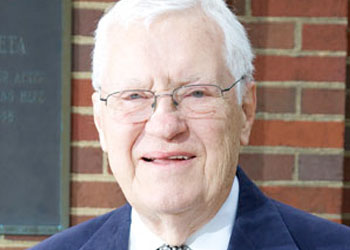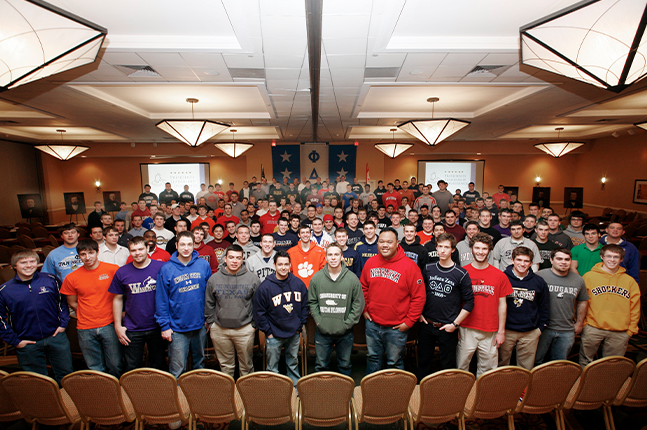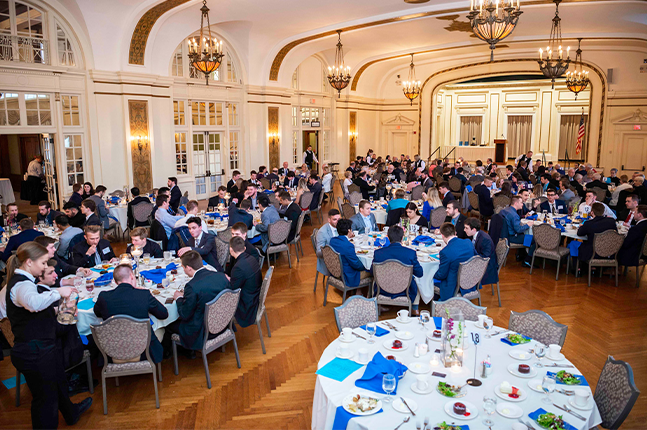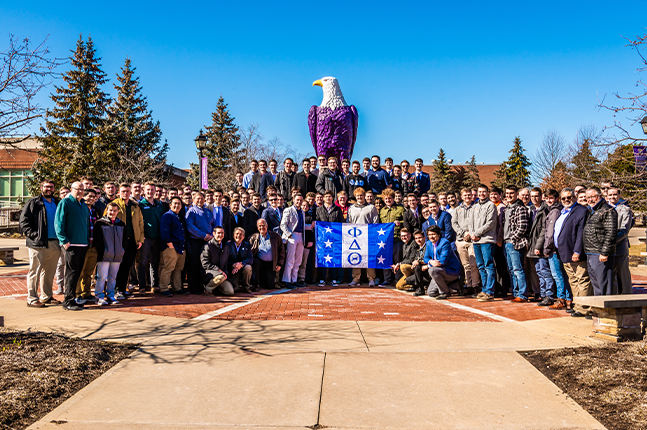Did Morrison know his Bond number?
Phi Delta Theta’s practice of assigning a Bond number to each initiate is a well-established system. Many Phis remember their Bond numbers all their lives. I have a friend in Nashville, Tennessee, who, upon meeting a Brother Phi, asks him immediately “What is your Bond number?” The inquiring Brother knows his own Bond number, of course, and the Bond numbers of many of his friends as well.
It is the practice in many chapters of seating members at chapter meetings by Bond number, that is, by the order in which they were initiated into the Fraternity. Another idea, developed many years ago, is to provide room assignments within the chapter house by Bond number with the earliest initiate receiving first choice. No doubt, there are other ways of putting the Bond number system to good use.
It is a little-known fact that Bond numbers did not exist in Phi Delta Theta at the time the Fraternity was founded. In fact, all six Founders entered the Chapter Grand without knowing that they held the first six Bond numbers in the Fraternity.
It appears that our Bond number system began to evolve during the summer of 1919 with what were then called “serial numbers.” During March of that year, a request went out to the chapters asking them to send their Bond books to the recently established headquarters office in Oxford, Ohio. Fred R. Cowles, Kansas ’05, had been named Assistant to the General Council a year earlier, and an office was provided for him in the memorial chapter house of the Ohio Alpha Chapter. By this time, 110 chapters had been installed, 88 of them in active operation, and approximately 25,000 men had been initiated.
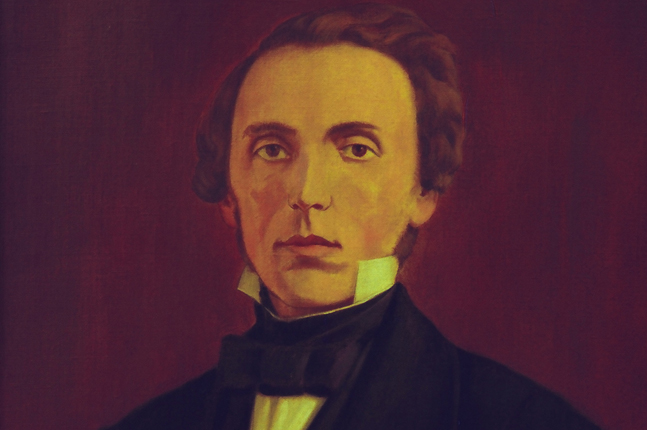
One can imagine the confusion which resulted in the attempt to register serial numbers, beginning with the first initiate in each chapter. The idea, of course, was to assign the numbers in the exact sequence of initiation date. No doubt, some of the early Bond books had been destroyed by fire or some other tragedy, and an effort had to be made to recreate a list in proper order. When the initial task was completed, two problems remained.
As time progressed, the names of additional initiates were discovered, so special care was taken to put these brothers in their proper slots by attaching a letter to the Bond number. For example, after Bond numbers 338 and 339 had been assigned to brothers initiated by Tennessee Alpha at Vanderbilt University, the names of two other initiates were discovered, who in fact, were initiated at the same time. One was assigned #338a and the other was given #338b. Similarly, after #94 and #95 had been claimed by initiates of the Pennsylvania Gamma Chapter at Washington & Jefferson, evidence was produced that an initiate of the same era had been separated from membership. Even so, the person needed to be included in the membership roster, and he was assigned #94a.
The second problem involved a person who had been assigned two numbers, usually because the individual transferred to a second seat of learning and was given a number by the chapter with which he affiliated. Eventually, the numbers recorded by the second chapter were discovered and the name removed. That is why, for example, there is no name assigned to Bond number 45 in the Ohio Beta Chapter at Ohio Wesleyan University.
Reference to “serial numbers” continues through 1922 before we find the term “Bond” number appearing in the General Council minutes for 1923.
In conjunction with this project of assigning numbers to all initiates, chapter officers were instructed henceforth to list their initiates by number when submitting initiation reports. With the establishment of a Central Office in Indianapolis in 1921, no doubt, the record-keeping became more efficient, and today we have a simplified method of accounting for the total number of persons initiated into Phi Delta Theta.
Brother Robert J. Miller joined the General Headquarters staff in 1951 and was named Executive Secretary (later Executive Vice President) in 1955, a position from which he retired in 1991. He continued to serve as President of the Educational Foundation until 1997 and later served proudly as the Fraternity’s Historian.

